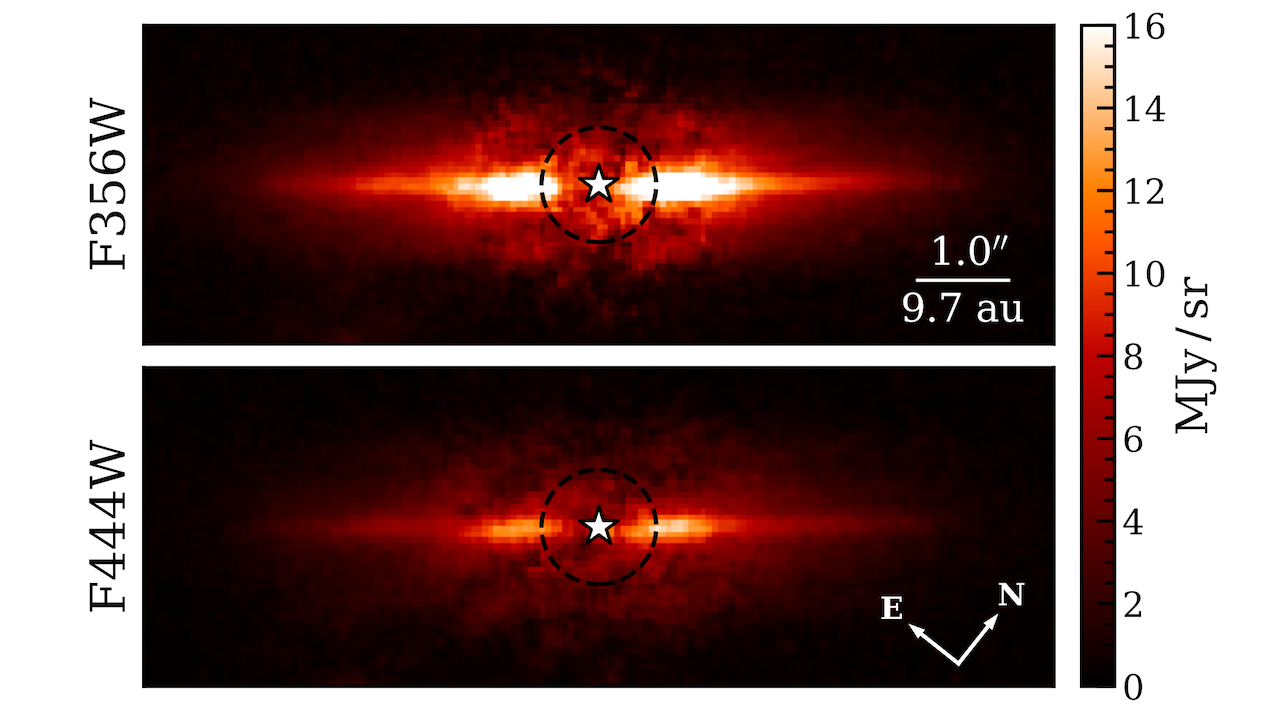JWST/NIRCam Coronagraphy of the Young Planet-hosting Debris Disk AU Microscopii

High-contrast imaging of debris disk systems permits us to assess the composition and size distribution of circumstellar dust, to probe recent dynamical histories, and to directly detect and characterize embedded exoplanets.
Observations of these systems in the infrared beyond 2–3 μm promise access to both extremely favorable planet contrasts and numerous scattered-light spectral features — but have typically been inhibited by the brightness of the sky at these wavelengths. We present coronagraphy of the AU Microscopii (AU Mic) system using JWST’s Near Infrared Camera (NIRCam) in two filters spanning 3–5 μm. These data provide the first images of the system’s famous debris disk at these wavelengths and permit additional constraints on its properties and morphology.
Conducting a deep search for companions in these data, we do not identify any compelling candidates. However, with sensitivity sufficient to recover planets as small as ∼0.1 Jupiter masses beyond ∼2′′ (∼20 au) with 5σ confidence, these data place significant constraints on any massive companions that might still remain at large separations and provide additional context for the compact, multi-planet system orbiting very close-in.
The observations presented here highlight NIRCam’s unique capabilities for probing similar disks in this largely unexplored wavelength range, and provide the deepest direct imaging constraints on wide-orbit giant planets in this very well studied benchmark system.
Kellen Lawson, Joshua E. Schlieder, Jarron M. Leisenring, Ell Bogat, Charles A. Beichman, Geoffrey Bryden, András Gáspár, Tyler D. Groff, Michael W. McElwain, Michael R. Meyer, Thomas Barclay, Per Calissendorff, Matthew De Furio, Marie Ygouf, Anthony Boccaletti, Thomas P. Greene, John Krist, Peter Plavchan, Marcia J. Rieke, Thomas L. Roellig, John Stansberry, John P. Wisniewski, Erick T. Young
Comments: 27 pages, 14 figures
Subjects: Earth and Planetary Astrophysics (astro-ph.EP); Solar and Stellar Astrophysics (astro-ph.SR)
Cite as: arXiv:2308.02486 [astro-ph.EP] (or arXiv:2308.02486v1 [astro-ph.EP] for this version)
Submission history
From: Kellen Lawson
[v1] Fri, 4 Aug 2023 17:58:46 UTC (977 KB)
https://arxiv.org/abs/2308.02486
Astrobiology, Astrochemistry








